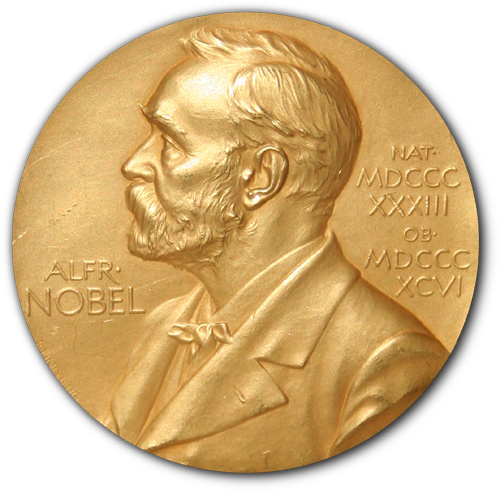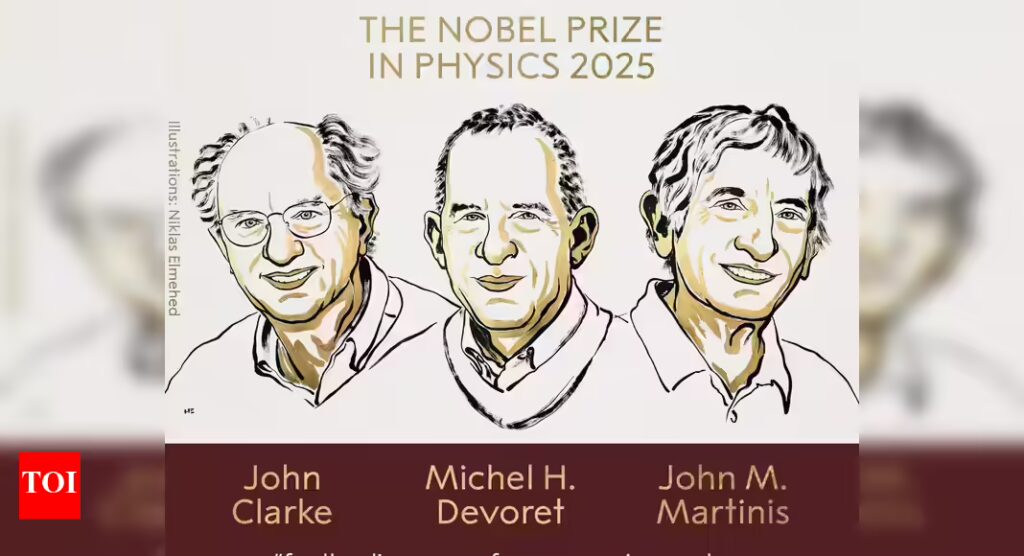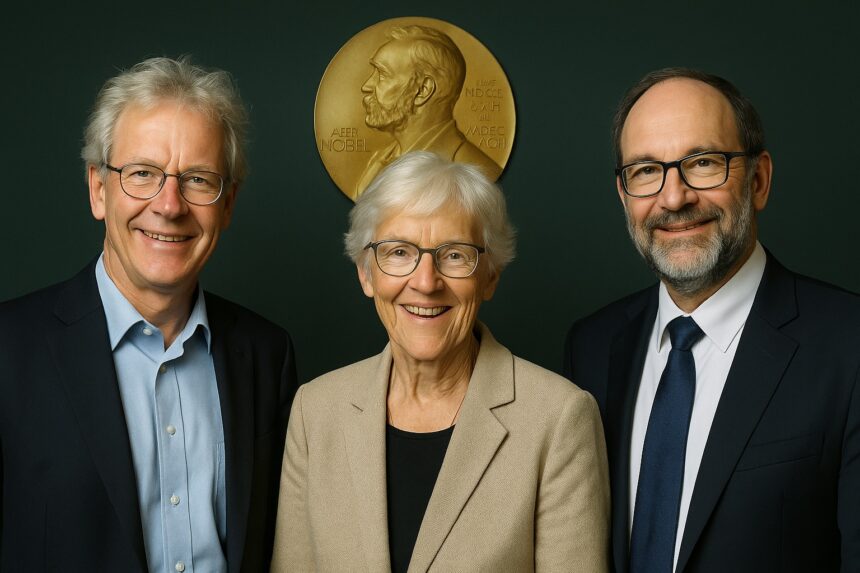Three U.S.-based physicists have received the 2025 Nobel Prize in Physics for their pioneering contributions to quantum mechanics. The discipline forms the foundation of modern digital technology, artificial intelligence, and next-generation computing. The laureates — John Clarke of the University of California, Berkeley, Michel H. Devoret of Yale University, and John M. Martinis of the University of California, Santa Barbara — were recognised for their discoveries in macroscopic quantum tunnelling and energy quantisation in superconducting circuits.
What’s Happening & Why This Matters

Their work from the 1980s and 1990s transformed how scientists understand and manipulate quantum behaviour in electrical systems, proving that quantum properties could exist and be controlled at scales visible to the human eye. The trio’s discoveries laid the groundwork for innovations in quantum computing, superconducting sensors, and precision electronics, fields now driving the next frontier of technological advancement.
According to the Nobel Committee for Physics, their research bridged theory and experiment by demonstrating that quantum mechanics — once confined to atomic and subatomic scales — governs even large electrical systems. Their results confirmed that electrical currents in superconductors can tunnel through energy barriers, effectively appearing on the other side without classical cause, a phenomenon previously thought impossible in macroscopic systems.
“Their discoveries helped transform quantum mechanics from a theoretical framework into an experimental reality,” said Olle Eriksson, Chair of the Nobel Committee for Physics. “It is wonderful to celebrate how century-old quantum mechanics continues to offer new surprises and practical value.”
Quantum Physics Becomes Tangible
At its core, quantum tunnelling describes a process where particles move through energy barriers that classical physics deems impenetrable. This strange property underlies much of today’s technology, from semiconductors and MRI machines to the transistors in every computer chip. Clarke, Devoret, and Martinis showed that these phenomena could be scaled and measured in superconducting circuits — electrical systems cooled to near absolute zero.
By experimenting with superconducting loops and Josephson junctions, the scientists observed transitions between discrete energy states exactly as predicted by quantum theory. The findings confirmed that even engineered systems — not just atoms or photons — obey quantum laws. Their work proved that electrons in superconductors behave collectively as a single quantum entity, allowing researchers to control and measure quantum states with precision previously unattainable.

This discovery transformed what was once abstract theory into practical engineering. It paved the way for quantum bits (qubits), the fundamental building blocks of quantum computers, and redefine our understanding ofnd electrical conduction, measurement, and coherence at the microscopic level.
The Legacy of Quantum Innovation
The Nobel Committee’s choice reflects a growing recognition of quantum physics as the engine of technological progress. Nearly every modern innovation — from smartphones and satellites to AI accelerators and quantum encryption systems — depends on quantum mechanics at some level. The award acknowledges not only a scientific breakthrough but also its enduring influence on global technology infrastructure.
Physicist John Clarke, speaking from Berkeley, expressed disbelief at receiving the call from Stockholm. “I was completely stunned,” he said. “We were just exploring what we thought was fascinating physics. It’s amazing to see it connect to technologies we use every day.”
Similarly, Michel Devoret and John Martinis have been central figures in propelling quantum information science. Martinis’ later work with Google’s Quantum AI lab produced one of the first demonstrations of quantum computational supremacy — solving problems beyond the reach of classical computers. Devoret, a pioneer in experimental superconducting circuits, continues to mentor the next generation of quantum physicists, influencing both academia and industry.
Their Nobel recognition cements decades of effort across multiple institutions and underscores the enduring value of fundamental science. From theoretical predictions in the early 20th century to practical applications in the 21st, quantum mechanics has evolved from mystery to utility, thanks to contributions like theirs.
The Context: From Theory to Technology
This year’s award resonates with the growing global investment in quantum technology. Governments and corporations are racing to harness quantum mechanics for breakthroughs in computation, communication, and sensing. The recognition of Clarke, Devoret, and Martinis is both symbolic and timely — honouring the scientific origins of a revolution that is just beginning to reshape industries.
Since 1901, the Nobel Prize in Physics has been awarded to 227 recipients; however, only a handful have made direct contributions to quantum mechanics. Among them are Albert Einstein for the photoelectric effect (1921), Niels Bohr for atomic structure (1922), and John Bardeen for superconductivity (1956). The 2025 laureates now join this elite lineage, representing a continuation of humanity’s pursuit to understand — and now harness — the invisible mechanisms governing reality.
The Nobel Prizes remain the world’s most prestigious scientific honour, established by Alfred Nobel, the Swedish inventor of dynamite, whose vision was to reward discoveries that “benefit mankind.” This year’s selection fulfils that vision by celebrating quantum research that already powers everything from global communication to precision medicine.
Each laureate will receive 11 million Swedish kronor (around €997,000) during the Nobel Prize Ceremony in Stockholm this December. The awards remind the world that discovery and curiosity remain the bedrock of progress, even when their immediate applications are not yet clear.
A Quantum Future Beckons
Quantum mechanics no longer exists only in physics textbooks or theoretical discussions — it’s inside data centres, hospitals, and laboratories around the world. The discoveries of Clarke, Devoret, and Martinis prove that the same equations that describe electrons and photons can also be used to design machines that think, sense, and process at scales unimaginable a generation ago.
Quantum research has moved from the fringes of science to the centre of innovation. The 2025 Nobel Prize in Physics reflects not just an academic achievement but a milestone in the evolution of human technology. What was once abstract mathematics now defines how we compute, communicate, and even perceive the physical world.
TF Summary: What’s Next
The 2025 Nobel Prize for Physics affirms the growing global focus on quantum computing, superconducting electronics, and quantum communication networks. Expect universities, corporations, and national research programs to double down on investment in these fields.
MY FORECAST: The work of Clarke, Devoret, and Martinis is more than a retrospective on discovery. It is a framework for the next era of technological advancement — where physics and computation merge into one. Their research is guiding the industries toward faster, more efficient, and profoundly intelligent machines that reimagine the art of the possible.
— Text-to-Speech (TTS) provided by gspeech


